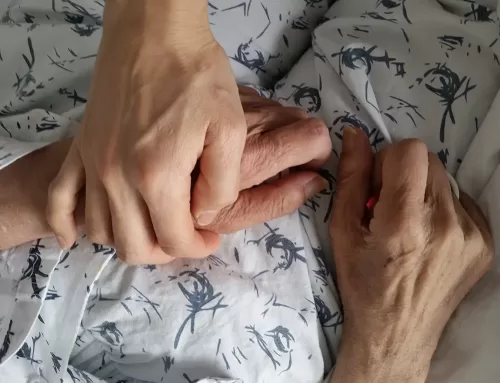Work burnout doesn’t discriminate and affects almost everyone. In the hustle culture that affects many of our lives, it’s easy to overlook the toll work demands—including parenting—that can gnaw away our mental and physical health.
A burnout is when you feel exhausted, stressed, and fed up with your job and responsibilities. You may feel obligated to work extra hours and days to please your coworkers and bosses or not getting enough support from your peers. Even simple tasks, like getting out of bed, can feel like climbing a mountain, and you may start to lose interest in things you used to enjoy.
Burnout statistics
You’re not the only one feeling burned out from work. A 2022 Gallup survey found that 46% of respondents reported experiencing daily stress in 2021 compared to 43% in 2020, 38% and 37% in 2019 and 2018, respectively.
The cost of work burnout in the U.S. is about $300 billion, while such cost ranges from $221 million to $187 billion among 18 Western countries, including Australia, Canada, and the EU-15.
Another survey found that 76% of respondents reported at least one symptom of a mental health condition, an increase of 17 percentage points in just two years.
This record level of stress is primarily caused by the COVID-19 pandemic, which has accelerated how people and companies reframe and rethink work-life balance and mental health.
Related reading: How Burnouts Affect Your Brain
In addition, a 2022 survey published by the U.S. Surgeon General found that 77% of workers reported to experience work-related stress in the last month. Also, about 57% have reported that burnout have negative impacts on their lives, including:
- emotional exhaustion (31%)
- didn’t feel motivated to do their very best (26%)
- a desire to keep to themselves (25%)
- a desire to quit (23%)
- lower productivity (20%)
- irritability or anger with coworkers and customers (19%)
- feelings of being ineffective (18%)

Source: The U.S. Surgeon General’s for Workplace Mental Health & Well-being, 2022. Image by Nick Ng.
In one example of work burnout, many physicians in the U.S. work about 51 hours every week, and 1 out of every 4 doctors work more than 60 hours a week. When the American Medical Association (AMA) asked a sample of physicians about their work hours in 2014, half said they wished they could work less.
The research shows that the more hours doctors work, the less satisfied they are with their jobs. Doctors in specialties that require longer hours tend to be less satisfied, while those in specialties with shorter hours tend to be happier.
Part of the problem is that today’s doctors have to spend a lot of time doing paperwork for various quality programs run by Medicare, Medicaid, and private insurance companies. These programs make it harder for doctors to spend time with their patients, which can lead to burnout.
On average, American doctors spend about 2.6 hours every week meeting the requirements of these quality programs. That’s enough time to see about nine more patients. And for every hour doctors spend face-to-face with patients, they have to spend an extra two hours doing administrative tasks.
Meanwhile, nearly 50% of physical therapists in the U.S. (based on a 2,813 sample population) experience a burnout. Many reported that burnouts were associated with job dissatisfaction, lower levels of empathy, and suboptimal quality of care.
Those who received mentorship and have higher self-efficacy reported to have lower burnout rate. Thus, mentorship may contribute to a better sense of accomplishment and personal and professional growth, while having greater self-efficacy may help physical therapists with the ability to cope with workplace stress and demands.
Seattle-based physical therapist Dr. Greg Louie, co-owner of Legacy Rehab and Performance, said that he knew he would feel burned out when he got tired at work and feeling fatigued in the morning and not wanting to go to work.
“I knew I had it. I just wasn’t motivated to go to work everyday,” he said. “It happened over time. There wasn’t a specific instant. Gradually, I realize the situation I was in had no opportunity to grow. The only way for me to get paid more money and advance was to see more clientele, meaning to take on more work, and I wasn’t willing to do that.”

What can you do?
There are some things you can do a little bit each day to recover from a burnout. The key is to take baby steps, just like adding a little more exercise and eating more veggies and fruits in your diet.
Physical exercise
There’s plenty of evidence that exercise of almost any kind can reduce burnout symptoms. Two systematic reviews (2017, 2018) have shown that moderate physical activity can reduce work burnout significantly, whether it is aerobics (e.g. running, cycling), anaerobics (e.g. weightlifting, sprinting), or relaxation exercises (e.g. yoga, general stretching).
In one review, researchers found that exercising once or twice a week for 4 weeks to 18 weeks “has promising effects on preventing and reducing burnout symptoms.”
Change your work patterns
Doing the same thing day after day can wear your motivation to work. Social psychologist and burnout expert Dr. Christine Maslach suggests that changing your routines each week can help reduce work burnout. These include working less hours, slowing down your work pace, taking more breaks, and avoiding overtime work.
Develop preventive coping skills
According to Maslach, coping skills can help you cope better with stress at work without changing the stressful environment itself. They focus on changing how you think about and react to stress, which may include adjusting your expectations, seeing things in a different light, or setting new goals.
For example, if you’re a nurse who frequently feels overwhelmed at work, you remind yourself that it’s okay not to accomplish everything perfectly within a single shift. You could prioritize tasks based on urgency, understanding that some tasks may need to be deferred or delegated.
Get help and support
Asking for help or support from your colleagues, family, and/or close friends can help reduce work burnout. They may provide new insights to your work, alleviate workload, or emotional support. Depending on whom you ask, they can also be a much needed source of humor, optimism, and encouragement when things get tough.
Self-analysis
Self-analysis involves taking time to reflect on your thoughts, feelings, and behaviors related to your job and stress levels. It’s about examining your own experiences and identifying any signs or patterns that may indicate your risk of burnout. This can include keeping track of stress symptoms with a diary, noticing negative thoughts or feelings, and reflecting on how you cope with stress.
What can companies do?
Besides the individual, companies can help a lot by changing their work environment and culture that can benefit the most of their employees while maintaining—or even improving—their productivity. University of Pretoria researcher and perdontist Razia Khammissa suggested that companies can address workplace burnout by promoting a work-life balance culture by:
- Providing resources for stress management and mental health support
- Fostering open communication channels
- Offering flexibility in work arrangement
“In different workplace settings, such as office-based, remote, or industrial environments, tailored approaches may be necessary,” Khammissa said. “For example, in office settings, flexible hours and remote work options could be beneficial, while in industrial settings, regular breaks, ergonomic adjustments, and access to counseling services might be more appropriate. Regular assessments of employee well-being and feedback mechanisms can help companies adapt their strategies to the specific needs of their workforce.”
She said that at her university workplace, wellness programs, employee assistance programs, stress-reduction workshops, and regular check-ins with the managers were already integrated into their work culture and system. Their managers were also trained in recognizing signs of burnout and offering support to employees who are experiencing it. Thus, working with healthcare professionals and caregivers should be no different than working with patients.
“Treating patients with burnout involves a multifaceted approach tailored to individual needs,” Khammissa said. “This includes addressing physical and emotional symptoms, such as fatigue and sleep disturbances, through lifestyle changes, psychological interventions, and sometimes medication. Interventions, such as cognitive-behavioral therapy, stress management techniques, and fostering a supportive environment are important in the management of burnout—as well as understanding the unique variations of burnout, whether it’s work-related, caregiver burnout, or existential.”

Psychotherapy
In some cases, you may need a mental help professional to help you. Psychotherapy is a type of counseling or talk therapy where a trained therapist helps you deal with emotional or mental health issues. It involves talking about your feelings, thoughts, and behaviors to understand and work through problems.
It helps you learn to manage their emotions better, relax, solve problems, feel more confident, and stand up for yourself. Sometimes your employer might pay for this therapy, but it’s up to you to decide if you want to start it.
Louie also said that he never took any of his work home, maintaining a work-life boundary. “Had I flipped the script and I took on more patients to get paid more money, then I would be taking more work and maybe had to do documentation outside of work,” he said. “As I got better [at work], I didn’t need a full hour to work with clients and needed only 45 minutes. I was able to document more efficiently and get [it] all done in a clinic session.”
Louie said that burnout made him eventually leave his physical therapy company and started his own practice. He now has more flexibility in how many patients he can see a week, establish a niche clientele, and take days off as necessary.
“I can take as many clientele as I want, and I gradually become more in demand, the system that I’ve created, with the coach I built out of, allows me to have the life that I want to live,” he said. “I want to be a model for my kids—when I eventually have kids—see me around as a father and I can spend time with them. I don’t want to be seen as that dad who has to work all the time who has barely any time for my kids.”



 by
by